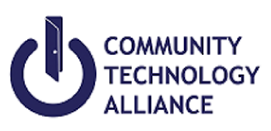Helping HSD in Santa Cruz “Bring Families Home” through data integration
May 31, 2018
Santa Cruz County Human Services Department (HSD) is using data integration to boost the impact of their program: “Bringing Families Home”. By quickly identifying who needs assistance, they’ll connect low income families with state services. HSD also hopes to rapidly rehouse those who are homeless and to prevent those families on the edge from falling into homeless.
Helping organizations finally be able to answer fundamental questions
By integrating data from multiple sources, HSD will overcome data siloes and get a true picture of who needs help in their community. With this pilot program, CTA will help HSD look into multiple data bases and discover:
- Who needs to be connected with homeless services?
- Who is eligible for state assistance?
How data integration works
When HSD sends a query, Open EMPI will search both systems- CTA’s data warehouse and HSD’s warehouse- to find out who needs help. The data warehouse then sends a referral to the continuum of care and HSD uses the unique, but confidential, ID to connect with client.
This type of targeted outreach will allow the “Bringing Families Home” program to quickly help at-risk families, connecting them with state assistance and offering rapid rehousing or help with security deposits.
Integrating Data, while Protecting Information
When you share protected information, you have to be mindful of respecting client confidentiality. CTA helps communities get the benefits of data integration without risking client confidentiality. Similar to the privacy solutions used in the healthcare industry, CTA’s data warehouse uses a Master Patient Index. This open EMPI lets you can compare clients from one system to the next while masking confidential information with a global ID.
Why Data Integration Matters
You wouldn’t be able to reach those hidden families without out data integration. “We’re pulling data out of a legacy HMIS system and also pulling it out of new, consistently updated system,” says Javier Celedon, CTA’s Operations Director. “This means you’re getting a live flow of data, compared to static data.”
There’s a growing recognition among human service agencies about the importance of data integration. The only thing worse than no data is inaccurate data. Clean, current data pulled from a variety of sources can mean the difference between a family getting assistance and falling through the cracks.
When CTA recently helped agencies like Monterey 211 and the Monterey Homeless Coalition with data integration, they were able to identify which clients needed assistance and use coordinated care to refer them to the appropriate services.
“Every community is different,” says Celedon. “We want to see what makes Santa Cruz tick and how to best serve clients in that community. We support data-informed decision making. If you can’t look at your data and see what’s working and not working, you don’t have a good way of making decisions.”
What can you learn from clean data?
Data brings to light which services work so you can allocate your resources where they’ll have the most impact. For example, you’ll offer more substance abuse relapse prevention services when you see that people are significantly more likely to stay housed when they can stay off drugs. This may feel like an intuitive conclusion; but when you’re able to present hard data to funders and policy makers, you’re more likely to succeed in getting approval.
Because all of CTA’s code is open source, the improvements made to HSD’s system will improve data integration for the next user. “Unlike most vendors, CTA doesn’t believe in using proprietary systems where everything all locked down and it’s hard to get data out. We use open source to keep the communication open and the costs down.”
CTA has become the link between technology and social change. “We want to see an end to homelessness and poverty,” says Bob Russell, founder of CTA. “I’m very aware that behind every statistic is a human story. We’re creating these data integration tools so you can merge systems and help people faster.”
When you know more, you can do more. Talk to us about your data integration project.

